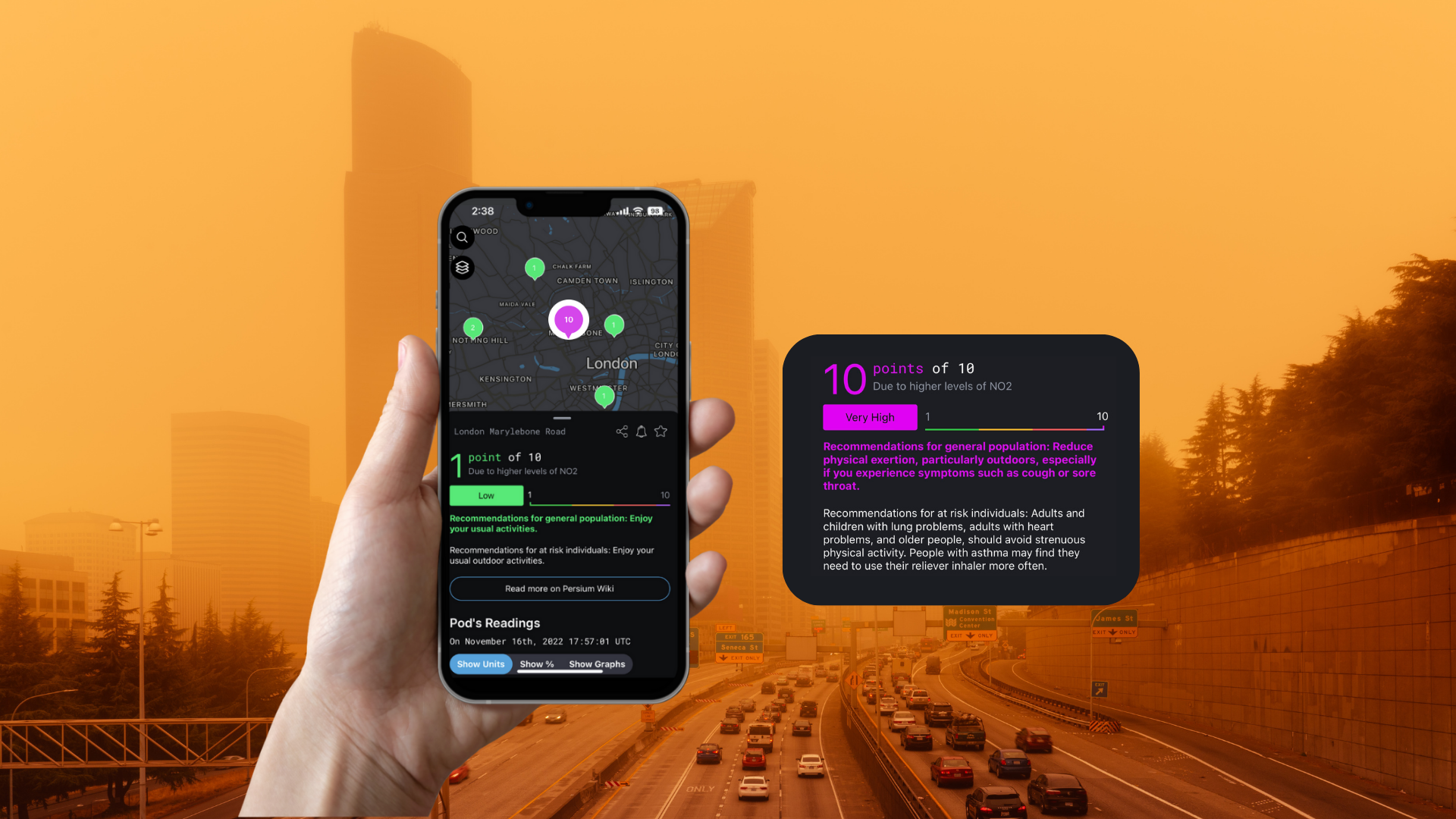Reading Time: 4 minutes
The effects of climate change are resulting in more frequent and intense wildfires. Rising temperatures dry out vegetation, making it more susceptible to burning. Shifts in rainfall patterns can lead to droughts, further intensifying fire risks. These factors contribute to the increasing frequency of wildfires in recent years.
Wildfire smoke is a mixture of hazardous air pollutants, such PM2.5, NO2, ozone, aromatic hydrocarbons, or lead. Disturbingly, PM2.5 concentrations in western North America have recently surged beyond the World Health Organization’s recommended levels. Moreover, in many regions, high levels of these pollutants are detected even hundreds of kilometers from the fire’s origin. The widespread dispersion and potential health effects of these pollutants are deeply concerning.
In this article, we will explore the health consequences of wildfire-related pollutants and emphasise the critical importance of air quality monitoring for public health protection.
Table of Contents
The Impact of Wildfires on Air Quality
1. Immediate Physical Discomfort: Many of these pollutants cause immediate irritations, manifesting as discomfort in the eyes, nose, throat, and lungs.
2. Exacerbation of Pre-existing Conditions: They can intensify asthma and other cardiovascular conditions. People already suffering from such conditions need to be especially cautious during or post-wildfire scenarios.
3. Respiratory Complications: The inhaled pollutants can result in respiratory infections, including colds, asthma attacks, bronchitis, and pneumonia.
4. Increased Particulate Matter Pollution: These tiny particles can deeply penetrate the lungs and circulate within the bloodstream, potentially leading to serious health complications like heart disease, stroke, and even neurological effects. Notably, Particulate Matter from wildfires has been found to be up to four times more harmful than standard atmospheric PM.
5. Methane and Black Carbon: Methane, a potent greenhouse gas, intensifies global warming, while black carbon, when deposited on ice, can accelerate its melting due to increased absorption of sunlight.
Wildlife & Environmental Toll
1. Effects on Herbivores:
- Wildfires pose significant threats to herbivores, ranging from grazing mammals to insects. The impact on insects, in particular, is concerning given their crucial role in maintaining ecosystem balances through processes like nutrient cycling and pollination.
2. Impaired Wildlife Immunity:
- Water bodies polluted by wildfire residues can have detrimental effects on wildlife health. Research indicates that these pollutants can suppress the immune systems of aquatic and semi-aquatic animals, making them more vulnerable to diseases. This weakened immunity can lead to increased mortality rates among affected species.
3. Impact on Migratory Birds:
- A 2020 study provided evidence linking the extensive wildfires that scorched 7.8 million acres with a significant migratory bird die-off observed in Colorado. The research identified toxic particles from wildfire smoke as a contributory factor to this mass mortality.
4. Wildlife Displacement:
- While controlled burns can offer benefits to certain wildlife species by rejuvenating habitats, uncontrolled wildfires often lead to habitat loss. Many animals are forced to flee, losing their sources of food and shelter. Post-wildfire, efforts might be required to relocate affected animals to shelters or rehabilitation centers, particularly if they sustain injuries. Subsequent reintroductions to the wild must ensure the chosen habitats are conducive to their survival.
Why Air Quality Monitoring is more crucial than ever
Air quality monitoring, like the advanced solutions provided by Persium, is no longer just a tool; it’s an essential shield against the fallout of wildfires. By keeping a close eye on air quality and wind patterns, monitoring enables us to:
1. Detect: Determine the presence of pollutants and gauge their concentration levels, helping to assess the severity of the situation.
2. Predict: Forecast the trajectory of polluted air, offering insights into potential future affected zones. This prediction can be vital for early warning systems.
3. Respond: Empower local authorities to issue timely health advisories, suggest protective measures, and even initiate pre-emptive actions in anticipated impact zones.
4. Strategise: Assist policymakers in developing informed, data-driven approaches. This helps not just in alleviating the immediate consequences of deteriorated air quality but also in strengthening vulnerable regions against future threats.
5. Educate: Enlighten communities about the current scenario, ensuring they understand the associated risks and are well-guided on precautionary measures.

How Persium Air Quality Monitoring Can Help
1. Precision Monitoring: Through Persium Pods, we capture meticulous and precise data on an array of pollutants. This ensures you’re equipped with a comprehensive and real-time view of your environment’s air quality.
2. In-depth Data Analytics: Our proprietary software available on the Dashboard goes beyond mere real-time data. By harnessing the power of AI, we offer insights into current conditions as well as predictive trends. This positions you ahead of potential deteriorations, helping preemptively address future air quality challenges.
3. Proactive Early Warning Systems: Persium’s MapView are adept at detecting imminent air quality threats. These systems promptly notify local authorities and the general public, facilitating quicker decision-making and action.
4. Bespoke Solutions: Recognising the distinct nature of each region’s challenges, we pride ourselves on a consultative approach. Our specialists collaborate with you, designing solutions uniquely tailored to address your region’s specific air quality dynamics.
5. Comprehensive Education & Training: Persium is deeply committed to community empowerment. Beyond cutting-edge equipment, we emphasise the importance of knowledge. Our interactive workshops and training sessions are crafted to enhance understanding, ensuring communities can adeptly navigate and respond to air quality concerns.
6. Remote Access & Cloud Integration: Harness the convenience of accessing your data from anywhere. With Persium’s cloud integration, stakeholders can monitor air quality metrics remotely, ensuring constant oversight and immediate response capabilities.
7. End-to-End Support: Our commitment doesn’t end with product deployment. We offer continuous support, ensuring that the systems function optimally and any emerging challenges are addressed promptly.
In summary, air quality monitoring is both our early warning system and our compass, pointing out the unseen dangers in the air and the direction they might take, especially in the shadow of wildfires.



